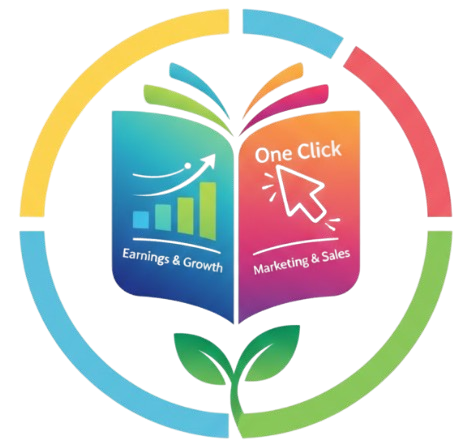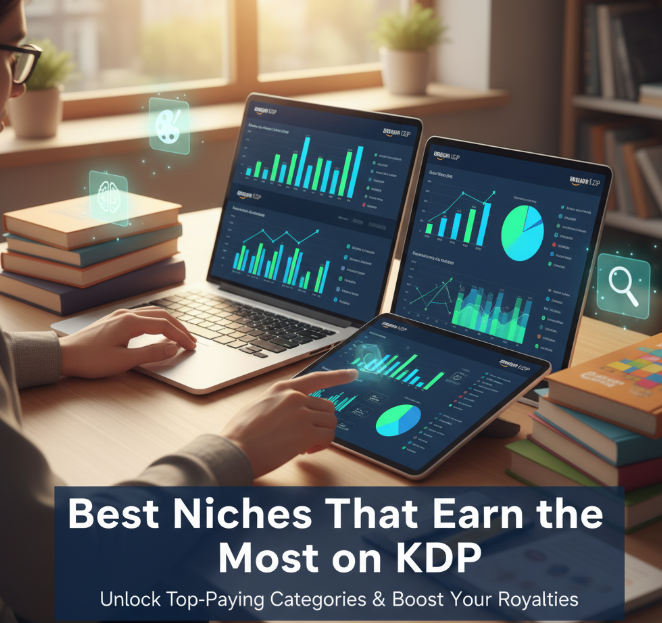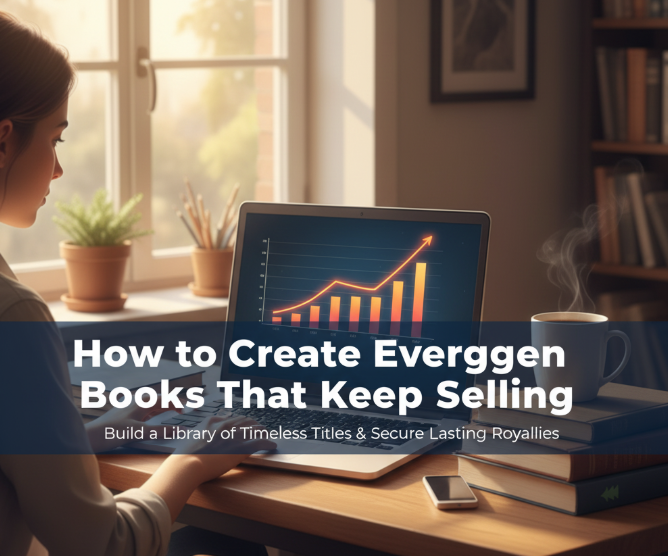Amazon Kindle Direct Publishing (KDP) has revolutionized the world of self-publishing in many global markets. Whether you’re a stay at home parent, college student or someone looking to earn some extra cash, KDP is a real opportunity for anyone who wants the ability to make money by publishing and selling books online. But there’s a catch: not all niches are made equal. Some subjects yield thousands every month to their authors, while others barely buy a cup of coffee.
If you are going to make real money with KDP, it’s crucial you understand what are the niches that actually pay. In this post, we’ll dissect the most profitable KDP niches, tell you why they work and show you how to begin making money with them right away.
The Secret of How to Choose a Profitable Niche
Why Your Niche is More Important Than You Think
Selecting the right niche, then, is similar to finding the best location for a restaurant. You could have the greatest food in all of creation, but if you put up shop on the wrong block, no one’s going to turn out. The way that KDP publishing also works.
When your niche is profitable, you’re leveraging existing demand. These books are already being searched for, already being purchased and already being reviewed. You’re not trying to convince yourself that the world wants something new – it does!
The best niches have three key traits in common:
- High search volume: Many people are searching for these books
- Low to medium competition: You can rank and be seen
- Repeat customers: Those who return to buy more books in the same category
So, with that aside lets get in to the niches where those three boxes get checked and KDP publishers make the most money.
Log Books: The Silent Cash Generators
While log books might seem boring, they’re gold on KDP. They are not fancy books where people write down everything. They sell like crazy because they serve a purpose that people need them for.
Types of Log Books That Sell
Mileage Log Books: Small business owners, Uber drivers and delivery workers use mileage logs to record how many miles they travel for tax write-offs. They purchase these books every year and even more than once a year.
Blood Pressure Books: With millions of people taking care of hypertension, these books help them keep track of their readings to share with the doctor. Healthcare professionals recommend them, so the demand is high.
Food Diary Log Books: Anyone monitoring their food intake, calorie counter or any other specific eating plan that you have. In a world where diets go in and out of fashion at the drop of a hat, food journaling remains popular year round.
Expense Trackers: These are used by small business owners and freelancers to keep track of spending and get ready for tax season.
Why Log Books Make Money
That’s the beauty with log books being so simple. You don’t have to be an excellent writer or designer. Inside is typically plain tables and lines. Also, people actually use them up and have to buy more of them, which makes for returning customers.
Planners and Organizers: Evergreen Profit Machines
Planners are one of the most profitable niches on KDP. With all the digital tools available to us these days, we still love our physical planners. They are great for focusing, reducing screen time and turning a reward into something that’s so much more tangible.
Top-Selling Planner Types
Daily and Weekly Planners: This is the bread and butter of the planner world. They are sold at the beginning of every new year, quarter or month. Academic planners are hot sellers in July and August as students gear up for the school year.
Budget Planners: You can never have enough advice about how to spend wisely. People are interested in how to save money, pay off debt and make sense of their spending. A product that breaks down monthly costs into small categories for easy tracking is selling like hot cakes.
Meal Planners: These are ways for busy parents and wellness-minded folks to plan out their meals (and grocery lists) of the week. They work great alongside other niches such as recipe books or fitness journals.
Goal-Setting Planners: At the start of every year, or whenever people are looking to make a change, sales for goal planners surge during the same months. They help people cut big dreams down to size into manageable steps.
| Planner Type | Peak Sales Months | Average Price Range | Competition Level |
|---|---|---|---|
| Daily/Weekly | Jan, Aug-Sept | $6-$12 | High |
| Budget | Jan, Sept | $7-$15 | Medium |
| Meal Planning | Jan / Sept | $6-$10 | Medium |
| Goal Setting | Jan, Apr | $8-$15 | Medium-High |
Making Your Planner Stand Out
The planner market is crowded, so you need to be clever. Add to a very specific sub-niche, like planners for teachers, or nurses, real estate agents or college students. The more you can niche down, the better your connection will be with your end buyer.
Activity Books for Kids: Passive Income Paradise
Parents are always seeking ways to keep their kids occupied and educated. Activity books tick both boxes, so no wonder they are in high demand on KDP.
High-Demand Activity Book Categories
Coloring Books: Never fails. Coloring books — from simple designs for toddlers to intricate patterns for older kids — sell nearly all year. Coloring books that are seasonal, like Christmas-themed ones, can have huge jumps around those holiday periods.
Maze and Puzzle Books: Kids love a challenge, parents love the fact that these keep kids off screens. They’re great for in the car, at a restaurant and even when it’s raining.
Tracing Books: Preschoolers’ parents are purchasing these guides to assist kids in learning how to write. A winner with the young: books of letter tracing, number tracing and shape tracing.
Dot-to-Dot Books: These are good for helping kids with counting and fine motor skills, plus they uncover fun pictures.
Why This Niche Works
Activity books don’t last long with kids, so parents are buying them all the time. And they are purchased by the other adults — grandparents, aunts, uncles and family friends. And one happy customer is often inclined to make crowd purchases.
The publishing costs are low as well, because these books are commonly black and white on the inside—so you’re likely to enjoy a better profit margin!
Puzzle Books for Adults: Way Larger Than You’d Guess
Don’t assume puzzles are for kids only. The adult puzzle book market is huge, and growing. People purchase them to wind down, stay sharp and cut down on screen time before bed.
Best-Selling Adult Puzzle Types
Sudoku Books: These Japanese puzzles have fans all over the world. Sudoku fans purchase book after book because they tear through them.
Crossword Puzzle Books: Classic and never the same puzzle. Variety challenge with 5 difficulty levels can entertain both audiences for beginners as well as fans of expert solvers.
Word Search Books: These are restful and take much less brainpower than crosswords, which is exactly what you want after a long day.
Large Print Puzzle Books: Seniors (those over 50 years old) are a huge market for puzzle books. The big print versions of any type of puzzle are a best seller for the demographic.
The Profit Potential
Puzzle books have great margins. You can sell them for $6-$12, and because people finish them, they return for more. A few customers even purchase puzzle books every month like a subscription.
Notebooks and Journals: Plain and Profitable
Don’t underestimate the power of a basic notebook or journal. These items may be simple, but they’re big sellers on KDP!
Hot-Selling Notebook Types
College and Wide Ruled: Everyone from students, writers and work tasks need college ruled lined notebooks. College-ruled, wide-ruled, and specialty lined notebooks geared for particular purposes all move.
Gratitude Journals: The wellness movement has turned gratitude journals into a hot commodity. Some of them have been designed with prompts that encourage people to think about the good in their lives.
Bullet Journals: These customizable journals are popular with the organized and let people devise their own systems for documenting habits, goals and daily tasks.
Composition Notebooks: These are purchased by the dozen both by teachers and students for various subjects, projects.
Quick Profit Tips
Notebooks, the trick is developing good looking covers and variety of sizes. Pocket-sized notebooks for some customers, full 8.5×11 inch pages for others. Produce several versions of successful designs.
Recipe Books and Cookbooks: Cooking Up A Fortune
Food is a universal experience, so recipe books are always going to be money makers. People are always on the hunt for new meal ideas, especially when it comes to specific diets or cooking methods.
Profitable Recipe Book Angles
Air Fryer Cookbooks: Air fryers are having a moment and people who buy air fryers need recipes exclusively for the cooking method.
Slow Cooker and Instant Pot Recipes: Busy families love set-it-and-forget-it dishes. Recipe books for these devices sell all year long.
Diet-Specific Cookbooks: There’s a hungry market (pun intended) for recipes on keto, paleo, vegan, gluten-free and even Mediterranean diets.
Quick Meal Recipe Books: 30-minute meals, 5-ingredient recipes, quick and easy–they are written for people who simply want something home-cooked to eat and don’t have all day to cook it.
Why Recipe Books Work
People collect recipe books. They don’t just buy one and stop — they have different ones for occasions, seasons and moods. This is wonderful for series potential.

Adult Coloring Books: The Relaxation Revolution
When adult coloring books first became a phenomenon, some assumed they were a fad. Years later, they’re still around. And people do not just use them for fun, or as a way to deal with stress and anxiety, but also for mindfulness and artistic expression.
Top Adult Coloring Book Themes
Mandala and Geometric Designs: These detailed forms resonate with individuals who seek a meditative, concentrated coloring practice.
Nature and Animals: Flowers, gardens, animals & wildlife and landscapes are always high performers. They’re beautiful and calming.
Inspirational Quote Coloring Books: Combining a source of inspiration with an art activity is a wonderful way to add relaxation into your life!
Themed Collections: Build themed collections to appeal to holiday seasonal or interest-based demographics.
Standing Out in This Market
There are a ton of adult coloring books to compete with, so the quality must stand out. Designs should be intricate enough to hold interest yet not so elaborate that they’re vexing. Experiment with different levels of complexity to find out what your audience likes best.
Self-Help and Personal Development Workbooks
There is no denying that people want to better themselves; in fact, the niche is highly profitable. Workbooks are a different sort of book than what you’re used to for personal development.
Popular Self-Help Workbook Topics
Anxiety and Stress Management: Books that educate ways of coping, breathing exercises and thought restructuring sell very well.
Relationship and Marriage Workbooks: Couples wanting to nurture their relationships grab these for date nights or therapy homework.
Self-Esteem and Confidence: These books work to challenge people’s limiting beliefs and improve their self-image.
Habit Tracking + Productivity: Books that help people form better habits and get more work done appeal to the ambitious, disciplined types.
The Advantage Here
Workbooks bring in higher prices than the barebones journals, due to added value with the guided actions. You can easily charge $10-$20 for a good, well-designed workbook.
Guided Journals: Prompts That Pay
These guided journals are a step above the plain notebook and one notch below the full workbook. They ask prompts and questions that direct the user in their writing so these are more valuable than empty journals.
Successful Guided Journal Types
Pregnancy Journals: Expectant moms will want to chronicle their journey. These journals guide them through each trimester with tailored prompts.
Travel Journals: People love to keep a travel journal. Guided travel journals filled with prompts about experiences, food and memories sell to the wanderlust crowd.
Reflection and Mindfulness Journals: There is a wide audience of the wellness-committed for daily prompting of self-reflection and present-moment mindfulness.
Couples Journals: Questions and prompts that partners answer together to deepen their connection are thoughtful gifts.
Why This Niche Pays
Guided journals address a familiar problem: the daunting blank page. They’re for people who know they want to journal, but don’t know what to write about — so sure, they’ll be happy to shell out a few extra dollars for convenient prompts.
How You Can Choose Your Profitable Niche
Now that you are aware which niches pay the most, how do you decide which one is right for you? Here’s a practical approach:
Research the Competition: See bestsellers in each category. Look at the number of reviews – a high number of reviews indicates high sales, but also tough competition.
Review Seasonal Trends: Time-sensitive trends like planners peak at December and January, while seasonal trends like summer activity books peak somewhere earlier in the year.
Think About Your Skills: Maybe adult coloring books would be right, if you’re good at design. If you’re organized and detail-oriented, surely planners are your thing.
Find Gaps: Competing directly with best sellers is tough- instead look for niche within a niche. A planner made specifically for veterinary students, on the other hand, may have fewer competitors competing against it than just a general student planner.
Test and Iterate: Try starting with one or two books in a niche. See what sells. Then either produce more of what’s in that category, or pivot to something else.
Making Your Books Actually Sell
So, finding a niche that makes sense to you is only part of it. And you need to do more to make your books discoverable and appealing to buyers.
Keyword Research is Critical
Amazon’s search algorithm decides which readers see your book. Run searches in Amazon’s search bar autocomplete, Google Trends or paid tools like Publisher Rocket to see what people are really searching for.
Include your keyword in a natural way in your book title, subtitle and description. Do not crowd them with awkward keywords – think how you can naturally add them into your content.
Covers Make or Break Sales
Your cover is your primary ad. Your book is being quite literally judged by its cover. Spend time learning rudimentary design skills, or, if it’s in the budget, hire someone to design your first several covers so you can set that as a template.
Check bestseller books in your niche market. What do we love more than their covers? Steal the winning recipe and add your special flavor.
Pricing Strategy Matters
Don’t default to the lowest price. Research competitor pricing. Books that are too cheap can appear low-quality, and overpriced books won’t sell.
A good initial price range for most low-content books is $6.99-$9.99. Workbooks and more complicated books can be in the $10.99-$19.99 range.
Get Those First Reviews
Reviews will build your trust and rank you up. Get friends or family to buy and leave an honest review of your book. Join KDP Facebook groups that allow author reviews (as per Amazon policy).
And never purchase fake reviews or otherwise cross Amazon — it’s not worth losing your account.
What Not to Do in These High Profit Niches
Finally, even in the perfect niches mistakes are made that hurt sales. Here’s what to watch out for:
Directly Copying Others: It’s fine to get inspired by others, but the bar for getting your book removed and account banned is significantly lower if you directly copy someone else’s design or layout.
Quality Overlooked: A log book doesn’t have to look cheap just because it is. Present in a fresh, neat and beautiful format with good margins.
No Interior Preview: Always include an interior preview of at least a few pages. People want to know what they’re buying.
Failing to Consider Trim Size: Various book sizes appeal to various buyers. Try the typical sizes, such as 6×9, 8.5×11 and 5×8 to find what sells best in your niche.
Quitting Too Soon: Your first book is unlikely to be a bestseller. The secret of KDP is having many books working together.
The Long Term: How to Build a KDP Business
The most successful KDP publishers don’t publish one book – they build libraries. Here’s how to think long-term:
Create Book Series: If you have a book series that works, create other things along those same lines. If your budget planner does sell, make alternative covers and seasonal ones for variety.
Go Deep with Your Niche: If meal planners are good and doing well, also include recipe notebooks, grocery shopping lists, freezer meal prep planners.
Establish a Brand: Incorporate elements of design that match the others in your books so customers will find a book, know it’s yours, and like one more than the next.
Reinvest Your Profits: Spend early earnings to enhance your covers, test paid advertising or outsource some so you can scale quicker.
Keep Up With Your Data: Keep an eye on what books sell, the best seasons for traffic and where your traffic is coming from. Leverage these to be more informed in your decisions.

Frequently Asked Questions
What is the Potential of Earning from KDP?
You can make anything between cents to dollars depending on how much effort, niche and books you have. Some publishers make $50-100 per month with a handful of books while others are generating $5k-10k+ monthly with bigger catalogs. The trick is regular publishing and canny niche selection.
Do I Have to Be an Artist or a Writer to Make It in These Niches?
Not at all. There are tons of profitable niches, such as log books and planners that don’t take much art skills at all. You can learn to work for yourself: Learn basic design with free tools like Canva, and outsource jobs on Fiverr or Upwork for $5 to $30 per book interior.
How Soon Do You Earn Money on KDP?
Your book is live 24-48 hours after being published. But it takes 2-6 months to really roll, as you build more books, get better and learn what sells. It’s not a “get rich quick” scheme, it is an honest to God business that rewards what you put into it.
What is the Easiest Niche for Absolute Beginners?
In terms of design ability, log books and simple notebooks are best for beginners. Design simple, working interiors with basic software and a strongly-defined purpose (mileage tracking, blood pressure logs, etc…).
Is It Possible to Be Successful in Competitive Niches?
Sure, but be tricky about it. Narrow in on under-served sub-niches of popular categories. Don’t use just “planner”; try instead “planner for nursing students” or “budget planner for single parents.” Targeting your efforts is a great way to shine.
How Many Books Do I Need to Publish Before I Make Money?
There’s no magic number, but when 10-20 books are working together it spurs momentum. Each book is a new lottery ticket – the more books, the more chances for success. And customers who like one book frequently purchase others from the same publisher.
Are These Niches Viable in 2025 and Into the Future?
Absolutely. Because these niches are rooted in basic human needs and behaviors that don’t shift rapidly. People will always need ways to keep track of things, organize their lives, entertain their kids and work on themselves. Technology hasn’t replaced physical books in these categories – for many people, it’s the opposite decision, since reading less on screens is a primary reason why they prefer to read print books.
What is the Single Biggest Mistake a Novice KDP Publisher Makes?
Publishing a book and waiting for the millions to flow! KDP success involves treating it like an actual business – posting regularly, doing market research, producing quality work, and just showing up month after month. Write many books, learn along the way and keep going.
Final Thoughts: Your KDP Journey Starts Now
The niches I’ve outlined above – log books, planners, activity books, puzzles, notebooks, recipe books, coloring books, workbooks and guided journals – these are the surefire route to KDP profitability. They succeed because they are filling real needs that people are willing to pay for.
The niche you pick isn’t going to make or break your success. It depends on taking action. Pick something you’re interested in, create your first book, publish it, and see what happens. Then do it again. And again.
You don’t need to be better than everyone. You just need to get started and never let up. Take KDP as a business, not as a hobby or lottery ticket.
Begin with one book in either of these reliable niches. Make the most of what you have where you are. Put it out there, drive sales for it, and let the chips fall where they may. Take the experience and make your next book better. Six months down the road, and you might have a growing catalog making money for you while you sleep.
The opportunity is real. The niches are proven. Now it’s your turn to make some moves and create your own KDP success story.




